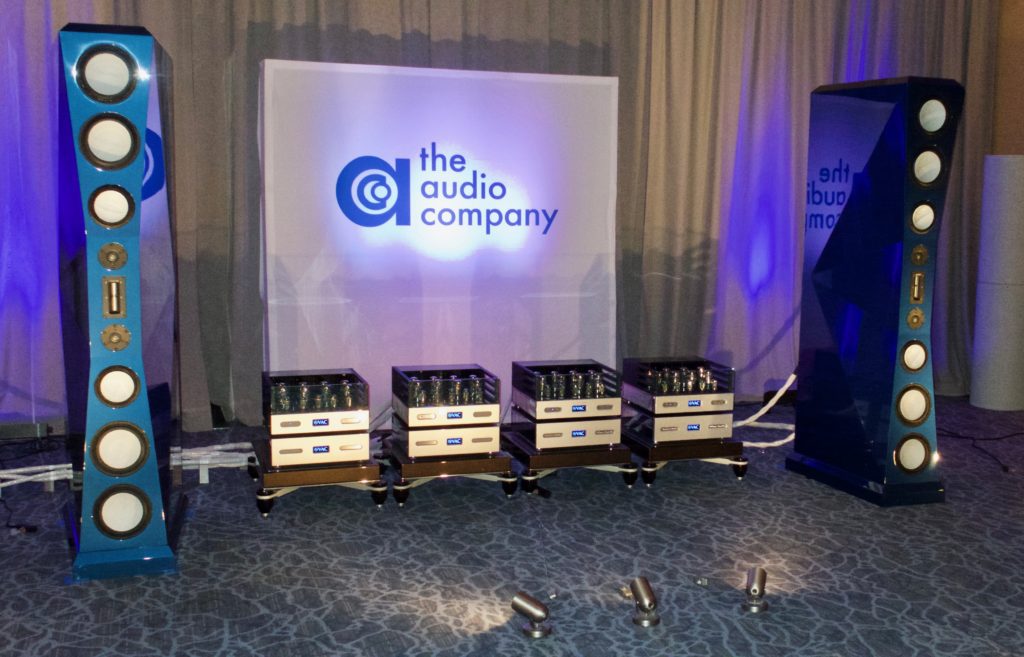
On Friday evening at AXPONA, Becky and I spent a little over two hours listening to an ultra high-end system that dubbed “the ultimate in sound”. Let’s get the details out of the way first. Gordon Waters, co-owner of The Audio Company in Marietta, GA dealership that put this system together said, “The products are from trusted vendors of ours, and we carry every brand that’s in the system in our store.” The system starts with Von Schweikert Audio’s ULTRA 11 speakers and V12XS Shockwave subwoofers with amplification from VAC in the form of four of their Statement 450iQ mono power amplifiers, the Statement Phono Stage and the Statement Line Stage. The digital source came from ESOTERIC USA with their Gandioso PI transport, Grandioso D1 mono block DACs, Grandiso G1 master clock and the N-01 network audio player. The Kronos Audio analog source was the Pro turntable with the SCPS-1 power supply, a Black Beauty tonearm and the Airtight Opus cartridge. J-Corder Custom Reel to Reels supplied the Technics 1520 tape deck. The interconnects, power cords and speaker cables were the Ultra Line and Signature Line from Masterbuilt Audio. Critical Mass Systems supplied the Maxxum equipment racks and amp stands. We gave this system our Beatnik Bongos award for the “Best Room Over $500,000”.
For Music Lovers but Maybe Not for Every Audiophile
This is a system that really falls into the category of “every music lover should hear this, but not necessarily every audiophile.” The reason I say this is that there are two types of audiophiles that should avoid hearing this system. First, there is the group that thinks everything that is mega-expensive is simply evil. These audiophiles show up on audio forums way too often; we even lost a subscriber to our site because we gave an award to this system. The second group are those who can’t hear it and be satisfied with the system they have at home. I can never afford a Mercedes-Benz Maybach Exelero for $8 million, but if I was at an auto show and it was there, I would surely take a look. Now, tell me if the dealer offered to let you experience one for a couple of hours, what car lover would turn that down. Still, when I got back in my BMW i3, I would still like it and think it’s a fun car to drive, because it is.
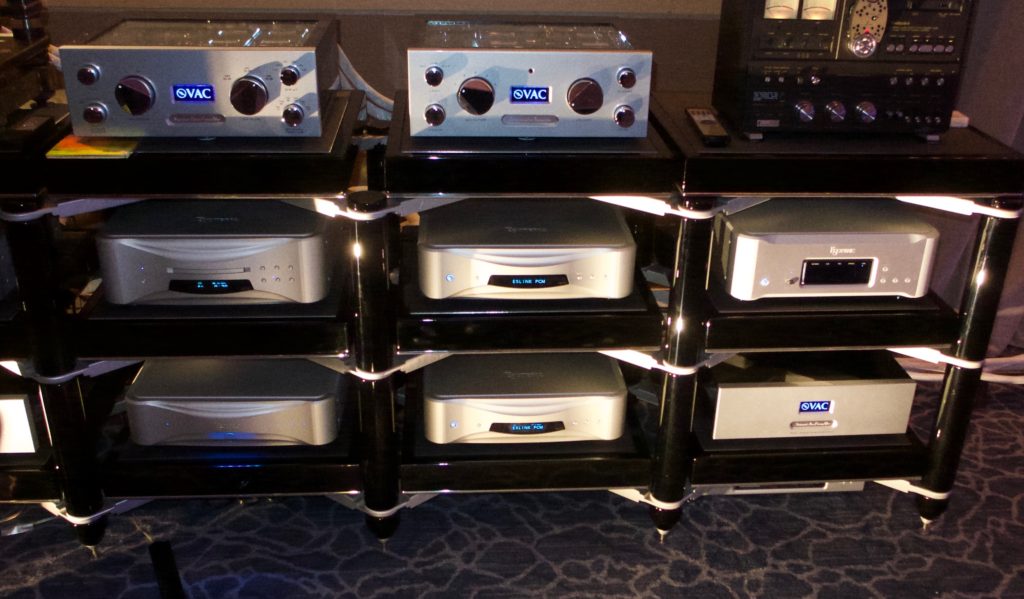
Why Put Together an Ultimate System?
I would never be able to review this “ultimate system” in my home; it wouldn’t even fit in my listening room, but as I thought about this system, I came to believe that there are at least three reasons to put together ultra high-end systems, especially for audio shows. For folks like me it says, “Look what’s possible for recorded music to sound like.” Second, it also results in trickle-down technology. I don’t believe in trickle-down economics, but so much of what we enjoy in everyday life comes from trickle-down technology. As Leif Swanson, the man who designed the speakers, showed me around these speakers he also talked about smaller speakers he was planning to design. And third, there are a few who have the funds, space and desire for a system that will never fail to deliver. It will always give you sound like you are at a concert, and it will always impress. Yes, the speakers are huge, but they have beautiful lines and the paint job is jaw-dropping. So, I’m going to stand by what I said in my show report, “If you have the funds and a room to put this system in, then I’m impressed, and you should go for it. For the rest of us, we will have to dream.”
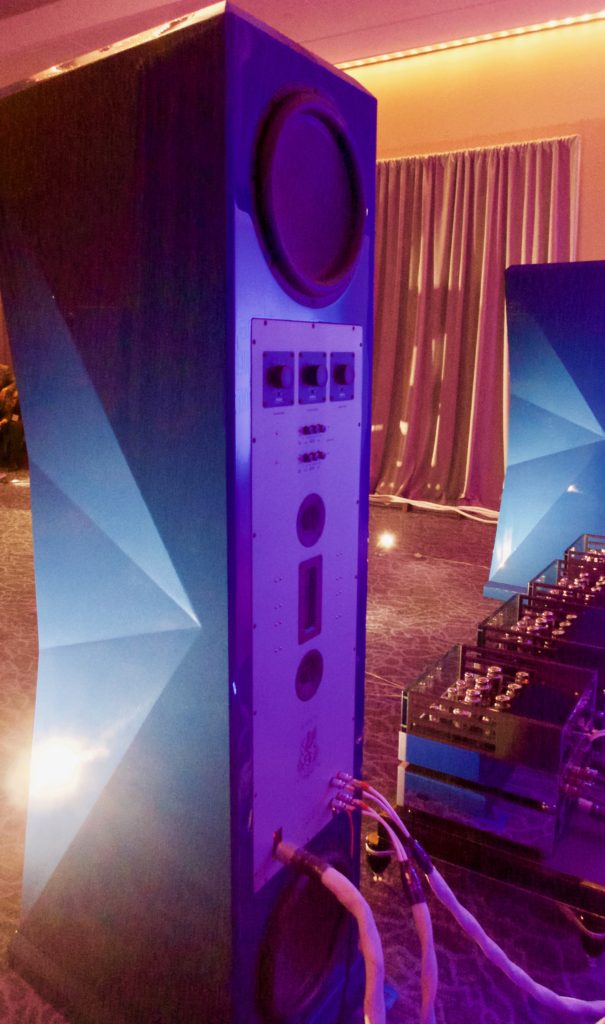
So What Made the System Sound so Good?
To begin with, the updated version of the Von Schweikert Audio Ultra 11 has an updated crossover, an added or enlarged midrange driver on the rear of the cabinet. Another difference at AXPONA from other times these speakers have been shown is that they were bi-amped with four of the VAC Statement 450iQ mono power amplifiers. I expect it was the updates, the bi-amping and the room that created a sound that was far better than the Von Schweikert/VAC system I heard at two California audio shows last year.
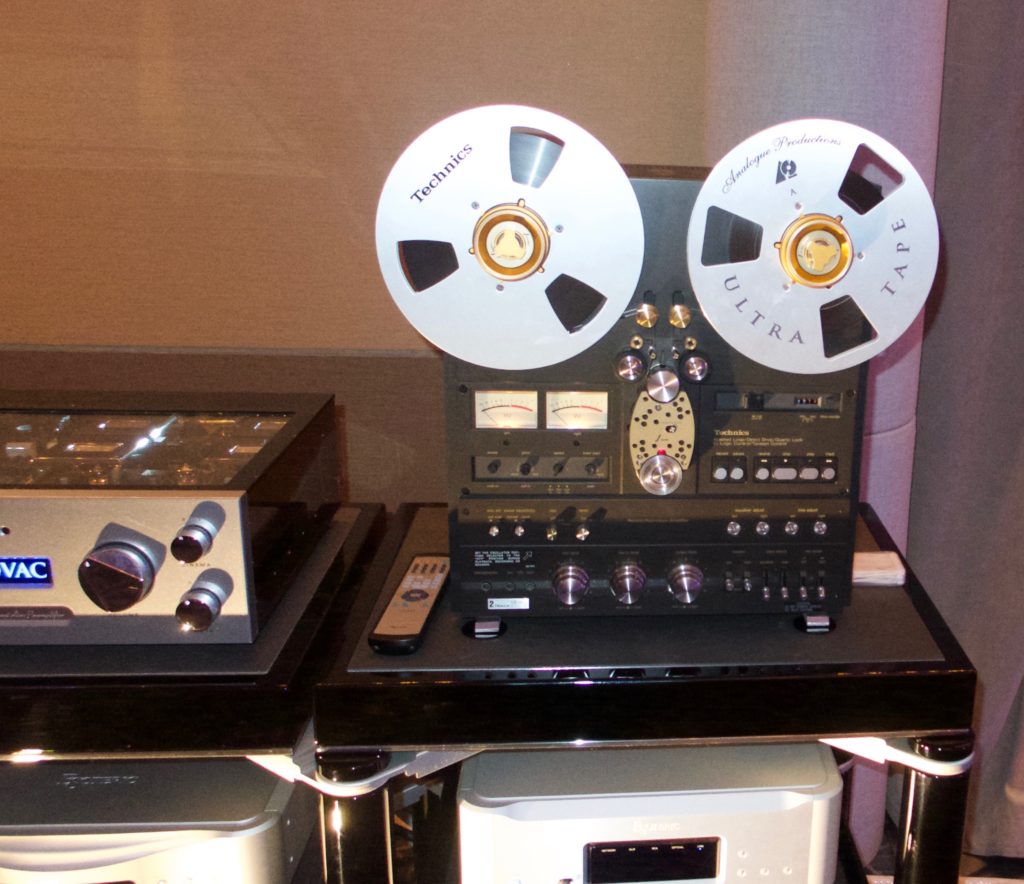
Of course, the great sound was not just because of the speakers and amps. There were three incredible sources in this system. There was a wonderful sounding Esoteric digital source. Then, there was the J-Corder Custom Reel to Reels’ rebuilt Technics 1520 tape deck. For a vinyl lover like me, there was the excitement of hearing vinyl played on the incredible Kronos Audio analog Pro turntable with SCPS-1 power supply and their Black Beauty tonearm. Just by looking at this turntable, you can see the serious engineering that went into making it.
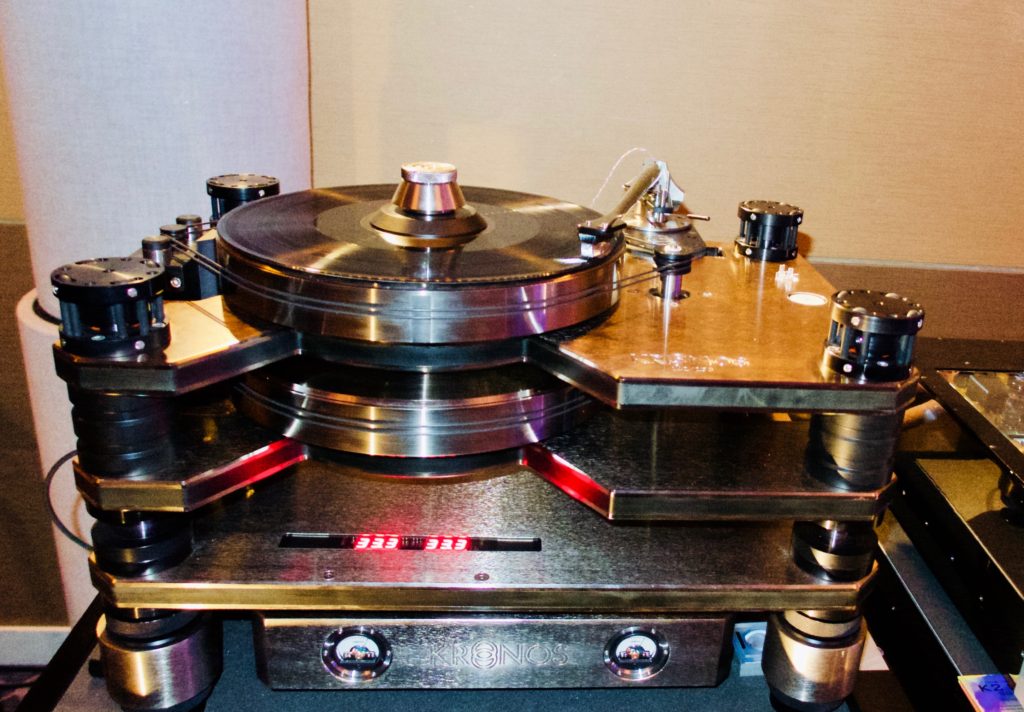
So How Did It Sound?
As I said, I’ll never review this system in my home, but I thought since I was able to listen to it in the seat of my choice for nearly two hours, I could share with you how it sounded at the show. First of all, what was amazing to me was that speakers this huge could disappear. Yes, the ballroom was quite large, and I was sitting quite a ways back, but judging from how far apart the speakers were placed, I felt I chose a seat that proportionally would be about where I sit in my listening room. At first, we were listening to some music I did not pick and was not familiar with. The sound was very impressive, but I had no idea how good it was except that it really involved me emotionally.
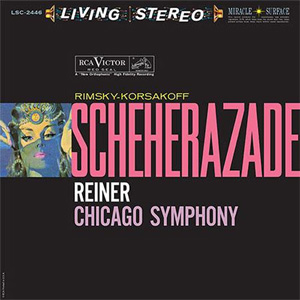 The first thing I asked to listen to was Rimsky-Korsakov’s Scheherazade LP conducted by Fritz Reiner. My reason for choosing this piece was simple. I know what the instruments sound like when Becky and I attend the symphony, and I am very familiar with this LP on my system.
The first thing I asked to listen to was Rimsky-Korsakov’s Scheherazade LP conducted by Fritz Reiner. My reason for choosing this piece was simple. I know what the instruments sound like when Becky and I attend the symphony, and I am very familiar with this LP on my system.
As much as I love my system, I have to admit that it cannot come close to sounding as much like a symphony orchestra as what I heard from this system. The biggest difference was the sheer scale of the performance; it was nearly as big as an orchestra at Davies Hall in San Francisco if you are sitting mid-hall.
Then, there was the orchestra that seemed to float from wall to wall and from slightly in front of the speakers to what seemed like beyond the back wall. The ability to hear the different rows of the orchestra and the special way Reiner places the strings was so realistic. In fact, the placement of the strings was one of the first things that Becky commented on.
The next big difference was the spot-on tonal balance of each instrument. Violins sounded like violins, violas like violas and so on. The violin section was just as tonally correct as a solo violin. Then, there was the quality of the bass. One would expect huge bass from such big speakers, but the bass instruments were also spot on. The bass had just the right amount of slam and decay, and the big string basses sounded warm and just so realistic.
I know this system would never sound the same in my room, but that’s not the point. The point is that this kind of reproduction of a symphony is possible from recorded music, in fact, music recorded 58 years ago.
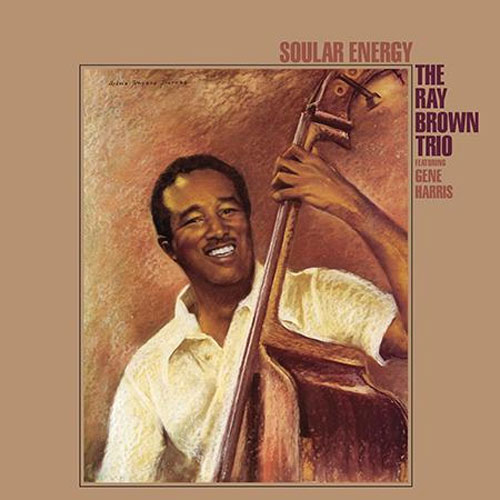 So now Becky and I knew how well this system could reproduce a full orchestra, but what about a small, simple jazz trio? One of our favorite jazz LPs is The Ray Brown Trio’s Soular Energy. We were lucky that just like with the Scheherazade LP, they had the same 45rpm version we have at home. Now with this recording, the trio is all between the speakers with the bass in the center and back with the piano and the drums are on either side. Several years ago, we saw these guys perform at Yoshi’s in Oakland, and Becky said that she could just close her eyes and picture where each of the instruments were placed on the stage.
So now Becky and I knew how well this system could reproduce a full orchestra, but what about a small, simple jazz trio? One of our favorite jazz LPs is The Ray Brown Trio’s Soular Energy. We were lucky that just like with the Scheherazade LP, they had the same 45rpm version we have at home. Now with this recording, the trio is all between the speakers with the bass in the center and back with the piano and the drums are on either side. Several years ago, we saw these guys perform at Yoshi’s in Oakland, and Becky said that she could just close her eyes and picture where each of the instruments were placed on the stage.
The scale was still big, but not bigger than life. It simply seemed to occupy the space that a piano, bass and drum kit would, if they ware playing at the end of the ballroom. Ray’s bass had great tone with a beautifully deep and airy sound. I liked that while I could hear the fingering, I never once found it distracting. This was an amazingly musical sounding system for such a huge system. I know it should be a given that a system that is attempting to be the very best would sound musical, but I have heard systems in this price range that wowed me but didn’t satisfy my soul. This definitely was not the case with this system; it had soul, ‘Pace, Rhythm, and Timing’ as well as beautiful, colorful musical tones. Gene Harris’ piano sounded like the same instrument from the lowest to the highest notes he played. No, it was not quite as coherent as my single-driver speakers, but it was coherent enough not to distract me from the music. Gerryck King’s drums and cymbals sounded very natural. They had great impact and good decay, sounded so beautiful and never seemed to not be part of the drum kit. I really wanted this LP to not sound as good as it does on my reference system, but no luck; this was the best I’ve ever heard this LP.
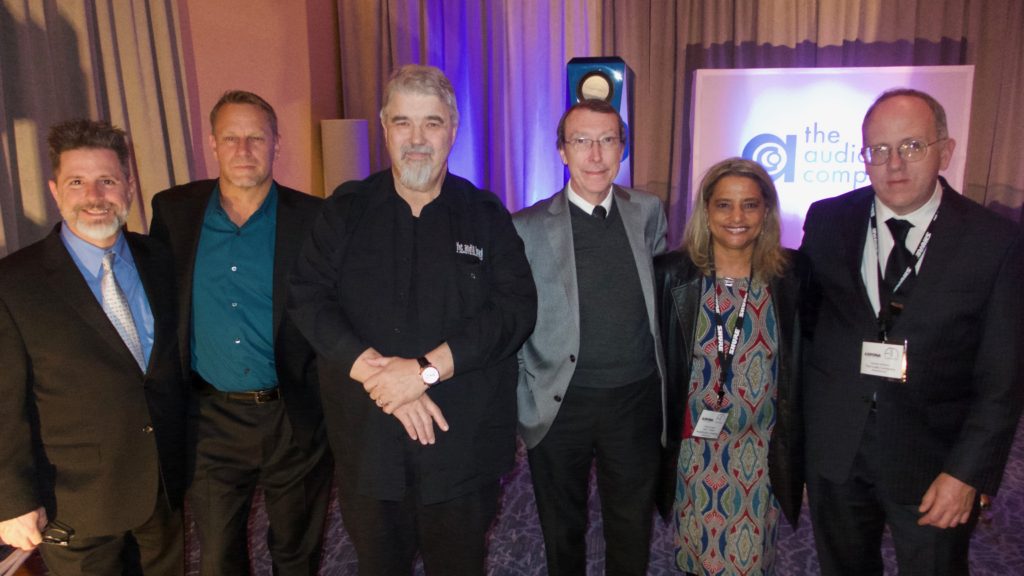
Pictured from left to right: Damon Von Schweikert and Leif Swanson of Von Schweikert Audio, Jack Roberts of The Audio Beatnik, Kevin Hayes and Darlene Monteiro of VAC, and Gordon Waters of The Audio Company.
So What Else Makes an Ultimate System?
It takes more than a bunch of really expensive gear to get sound like this. Just matching speakers, amps, sources, cables and power conditioning that sound their best together will still not necessarily produce this sound. Then, the system has to get to the show undamaged, and we know the team at The Audio Company put together a caravan to move everything from Atlanta to Chicago. In fact, we had fun reading their Twitter posts charting their trip. Then, the system has to be set up to sound it’s best, and in this case, in a room they had never used before.
I want to say a big thank you to Damon, Lief, Kevin and Gordon and everyone else who made the “ultimate in sound” system possible. Just like we remember great live performances, Becky and I will never forget the night at AXPONA in 2018 that we heard Rimsky-Korsakov’s Scheherazade played by the 1960 Chicago Symphony conducted by Fritz Reiner. Yeah, it sounded like they were really there!
